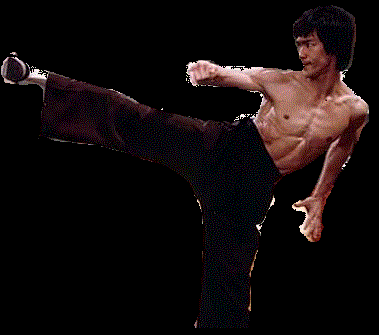T'ai chi ch'uan
T'ai chi ch'uan or Taijiquan, often shortened to t'ai chi, taiji or tai chi in English usage, is an internal Chinese martial art practiced for both its defense training and its health benefits. It is also typically practiced for a variety of other personal reasons: its hard and soft martial art technique, demonstration competitions, and longevity. As a result, a multitude of training forms exist, both traditional and modern, which correspond to those aims. Some of t'ai chi ch'uan's training forms are especially known for being practiced at what most people categorize as slow movement.
Historic origin:
Origins of the material now identified as Tai Chi Chuan are associated with three separate but somewhat related traditions. Popular myth attributes the creation of Tai Chi Chuan to a Daoist alchemist named Zhang San Feng reported variously to have been born in 960, 1247 and 1279 AD. Though the name of this individual is associated with intrigues of the Ming Chinese court, the first historical mention of this individual is not found until the Qing Dynasty where it is first mentioned in Huang Zong Xi's allegorical "Epitaph for Wang Zhengnan (1669). The first mention of Zhang San Feng as the originator of Tai Chi Chuan did not occur until the 19th Century where he is mentioned in the preface to the Tai Chi Chuan classics assembled by Wu Yuxiang (1812 - 1880) and his brothers. A later redaction of this source states, in contradiction, that "the creator of Tai Chi Chuan is unknown", perhaps indicating that the original attribution may have had more to do with invoking nationalist fervor than with historical accuracy. What is now known as "t'ai chi ch'uan" only appears to have received this appellation from around the mid-1800s. There was a scholar in the Imperial Court by the name of Ong Tong He who witnessed a demonstration by Yang Luchan ("Unbeatable Yang"). Afterwards Ong wrote: "Hands holding Taiji shakes the whole world, a chest containing ultimate skill defeats a gathering of heroes." This was the time when Yang Luchan made the Chen clan's martial art known to the world through his own form ("Yang family style").
Before this time the Art had no name. It was simply an unusual martial art practiced by a few. Jiang Fa passed down the Art to Chen Qingping in Zhaobao Town and Chen Changxing in Chenjiagou.[citation needed] Before the time of Yang Luchan, the art appears to have been generically described by outsiders as zhan quan (沾拳, "touch boxing"), mian quan (绵拳, "soft boxing") or shisan shi (十三式, "the thirteen techniques").
T'ai chi ch'uan as sport:
In order to standardize t'ai chi ch'uan for wushu tournament judging, and because many t'ai chi ch'uan teachers had either moved out of China or had been forced to stop teaching after the Communist regime was established in 1949, the government sponsored the Chinese Sports Committee, who brought together four of their wushu teachers to truncate the Yang family hand form to 24 postures in 1956. They wanted to retain the look of t'ai chi ch'uan, but create a routine that would be less difficult to teach and much less difficult to learn than longer (in general, 88 to 108 posture), classical, solo hand forms. In 1976, they developed a slightly longer form also for the purposes of demonstration that still would not involve the complete memory, balance, and coordination requirements of the traditional forms. This became the Combined 48 Forms that were created by three wushu coaches, headed by Men Hui Feng. The combined forms were created based on simplifying and combining some features of the classical forms from four of the original styles: Chen, Yang, Wu, and Sun. As t'ai chi ch'uan again became popular on the mainland, more competitive forms were developed to be completed within a six-minute time limit. In the late-1980s, the Chinese Sports Committee standardized many different competition forms. They developed sets to represent the four major styles as well as combined forms. These five sets of forms were created by different teams, and later approved by a committee of wushu coaches in China. All sets of forms thus created were named after their style, e.g., the "Chen-style national competition form" is the 56 Forms, and so on. The combined forms are The 42-Form or simply the Competition Form. Another modern form is the "97 movements combined t'ai chi ch'uan form", created in the 1950s; it contains characteristics of the Yang, Wu, Sun, Chen, and Fu styles blended into a combined form. The wushu coach Bow Sim Mark is a notable exponent of the "67 combined form".
These modern versions of t'ai chi ch'uan (often listed as the pinyin romanization "taijiquan" among practitioners, teachers and masters) have since become an integral part of international wushu tournament competition, and have been featured in popular movies, starring or choreographed by well-known wushu competitors, such as Jet Li and Donnie Yen.
In the 11th Asian Games of 1990, wushu was included as an item for competition for the first time with the 42-Form being chosen to represent t'ai chi ch'uan. The International Wushu Federation (IWUF) applied for wushu to be part of the Olympic games, but will not count medals.
Practitioners also test their practical martial skills against students from other schools and martial arts styles in tuishou ("pushing hands") and sanshou competition.






